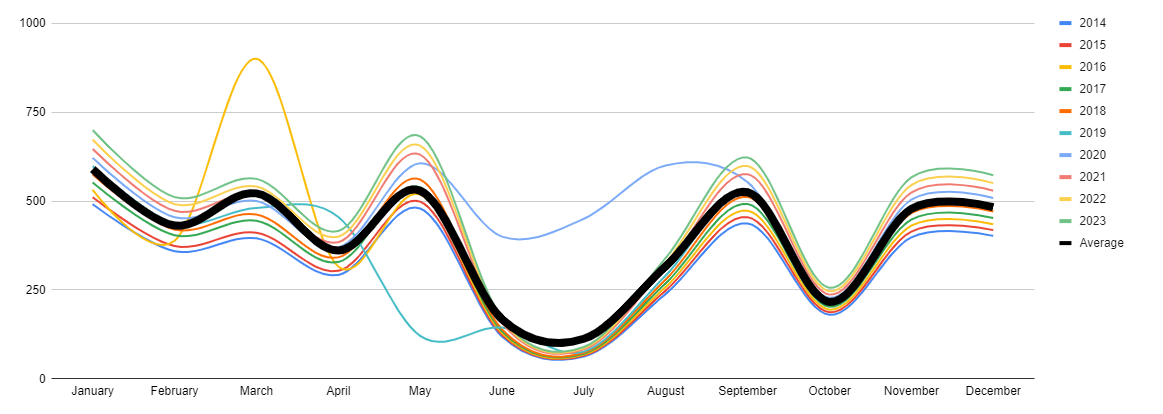Google updates can cause uncertainty, confusion, and fear amongst non-SEO and non-marketing business stakeholders.
As an industry, we like to fixate on the winners and losers of any given update, and typically, websites (and categories) that take the larger hits gain more traction and shares.
As a result, the algorithm update horror stories also tend to end up in C-level inbox circulation more frequently.
Simplifying Google updates for C-level stakeholders involves focusing on key takeaways, business impact, and actionable insights (where possible).
Creating Frames Of Reference
When communicating to wider business stakeholders, creating frames of reference is essential for ensuring that your message is clear, relevant, and resonates with the audience.
From experience, there are five key elements to creating effective frames of reference for client C-level and non-marketing stakeholders.
| Component | Notes |
| Contextualize | Start with the big picture and relate ideas to familiar concepts. Make this “real” for who you’re communicating with. |
| Use Relevant Data | Present data in terms of ROI, benchmarks, or impact that matters to the audience. |
| Simplify Complex Ideas | Break down information, avoid jargon, and use visuals where possible. Keep it simple, as going too complex or complicated with visuals can cause other complications. |
| Highlight Impact | Emphasize tangible business outcomes and use scenarios to illustrate effects. (E.g., a reduction in Search visibility in Segment A could lead to an X% decrease in MQLs over Y months based on the current website CVR.) |
| Be Consistent | Align with business strategy and reinforce key messages. |
You may also choose to use external, neutral sources that support or validate your communications.
For example, I tend to use a lot of Search Engine Journal’s coverage of Webmaster Hangouts and point to direct quotes from Googlers.
Communicating Updates, Even If They Don’t Matter
Let’s revisit a point I made at the beginning of this article: We can’t assume that we are the client’s sole source of SEO or Google-related news.
When speaking with the CMOs who helped shape these initial articles, one key issue they highlighted was the lack of clarity around Google updates in their past engagements.
They specifically mentioned challenges in understanding updates like RankBrain and initiatives like Hidden Gems.
It’s our responsibility to ensure that our C-level stakeholders are not only informed about changes in the search landscape but also understand how these changes impact them directly.
This proactive approach helps prevent any confusion or the impression that we’re not adequately addressing and mitigating risks for their organization.
The impact of these updates can vary greatly across different sectors – some may experience significant ranking shifts, while others might see only minor adjustments.
Additionally, Google employs systems that, while not typically labeled as “updates,” still play a vital role in shaping search results.
For instance, RankBrain, an AI system, aids Google in interpreting the intent behind queries, especially those it hasn’t encountered before.
Meanwhile, initiatives like Hidden Gems are designed to bring lesser-known but high-quality content to the forefront.
If we don’t make these distinctions for the client stakeholders, we leave them open to interpretation and potential incorrect/contradictory information online or from other vendors.
The 30,000ft View
The 30,000ft view in marketing communications refers to a high-level, strategic perspective on how Google updates or changes in the search landscape can potentially affect – or have started to affect – the organization.
The focus is on the big picture, considering the overarching goals and how
Key Updates
Highlight the most important developments and how they affect the overarching business strategy. This could be changes in the market, internal progress, or shifts in priorities.
Recommended Actions
Outline the next steps, focusing on what needs to be done, who’s responsible, and how these actions align with activities already in-flight (and planned), and the activities of other marketing channels.
Implementation Timeline
Provide a clear timeline with key milestones and deadlines. This also includes a follow-up plan to ensure everything stays on track and any adjustments are made as needed.
The above can be communicated effectively through DARCI and RAG visuals.
DARCI and RACI are both frameworks used in project management, but they serve slightly different purposes and offer varying levels of detail.
DARCI builds on the RACI framework and adds a layer by including a Decision-Maker role.
- Decision-Maker.
- Accountable.
- Responsible.
- Consulted.
- Informed.
This is particularly useful in more complex projects where decision-making is crucial and needs to be clearly defined.
DARCI is often used in more complex or higher-stakes projects where the clarity of decision-making is critical, while RACI is sufficient for more straightforward tasks.
In a client/agency environment, the Decision Maker could well be your main point of contact or the client SEO lead, supported by the agency.
Visual Communications
Torino Scales
Organizations like NASA traditionally use the Torino Scale to assess the potential threat of near-Earth objects (NEOs), like asteroids and comets.
At the April 2024 edition of BrightonSEO, I introduced them as a tool for communicating and assessing the “potential impact hazard” of Google updates, emerging technologies, and changes to legislation…you could visually map anything that you would identify through a PESTLE analysis on a Torino Scale.
For example, a high rating on this scale would indicate significant potential changes to organic search performance, warranting close attention and possible strategic adjustment.
As this is a visual aid, you can update it between meetings and provide context in your scheduled stakeholder meetings as to why certain things have been upgraded or downgraded in terms of risk to the business and organic search performance.
Google Updates Vs. Seasonality
Seasonality affects most businesses, and sometimes, non-marketing stakeholders can confuse seasonal trends with a decline in organic performance or the adverse effects of a Google update between the periods being compared.
The only way to resolve this is through education, and by using year-on-year traffic and sales data, you can show consumer and market trends.
 Screenshot from author, August 2024
Screenshot from author, August 2024Overlaying data in this way helps educate stakeholders who may not be familiar with the consumer acquisition side of the business or are external consultants with specialisms outside of marketing.
Showing the average demonstrates anomalies in the data outside of the general seasonality and helps set performance expectations.
This data also helps educate stakeholders on why certain SEO (and other) marketing activities are being prioritized to reach the highest volume of audience members showing intent.
Visualizing traffic or revenue data over time, even at a high level, can be invaluable in educating non-marketing stakeholders within the business. In the example I provided earlier, aside from anomalies, there are consistent month-on-month declines in June, July, and October.
Many industries operate with a certain rhythm, and this visualization helps illustrate that pattern.
By understanding these natural fluctuations, businesses can avoid misallocating resources to identify root causes when, in reality, the issue may simply be that a smaller percentage of your Total Addressable Market (TAM) is actively buying or converting during those periods.
Communications Delivery
Timely, concise, and relevant updates build trust and empower C-level leaders to make well-informed decisions that can drive long-term success for both the client and the agency.
There are several ways, outside of the standard reporting and account management cadences, that allow you to communicate algorithm updates and other market factors effectively.
Centralized Wikis
By consolidating the latest updates, best practices, algorithm changes, and case studies in one easily accessible location, agencies can provide clients with real-time insights into factors that may impact their digital presence.
These Wikis also then serve a dual purpose, as anyone new to the business (or client) has a repository they can refer to for back history and information that otherwise may have been lost or buried in the BAU comms of the relationship.
Instant Messengers (IMs)
I’m not a big fan of normalizing IMs for client communications, as they tend to create single points of failure/stress points on an account.
To me, they can serve the purpose of delivering a message quickly and effectively, with further information to follow – much like Paul Revere’s Midnight Ride.
By creating dedicated channels or groups for each client or specific topics, agencies can ensure that relevant information is delivered directly and promptly.
These updates can then be expanded on through calls, or more comprehensive updates.
Clear Is Kind, And So Is Brief
Clear communication is challenging in SEO. You have a lot to cut through — not only the complexities of your work internally but also the messaging that people consume externally.
Frames of reference play a critical role in ensuring your communication is clear and delivers your intended message. C-level executives and non-marketing stakeholders are a specific audience with unique challenges and intents. You must communicate with them in a way that serves their needs.
Approach communication as a service that helps key stakeholders make informed decisions. This approach builds trust and helps you advocate for impactful resource allocation.
More resources:
Featured Image: fizkes/Shutterstock

